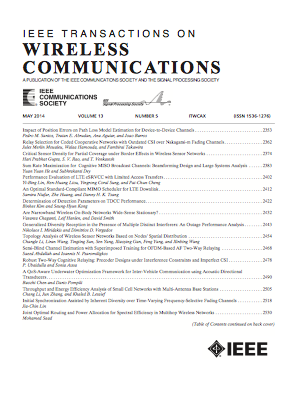Energy Efficient and Low Latency Federated Distillation Over UAV-Assisted Wireless Networks
IF 10.7
1区 计算机科学
Q1 ENGINEERING, ELECTRICAL & ELECTRONIC
引用次数: 0
Abstract
Unmanned aerial vehicles (UAVs) equipped with sensors, computing units, and communication modules, together with ground devices, constitute a ubiquitous integrated low-altitude network, which can provide users with sustainable computing and communication services in areas where terrestrial infrastructure has been compromised or rendered inoperable. Federated learning-enabled UAV (FL-UAV) wireless networks fully utilize the computational and communication capabilities of UAVs to protect user data privacy by exchanging model updates with ground devices. However, facing the challenges of low energy utilization efficiency and high training latency caused by UAV deployment, resource allocation, and communication overhead in FL-UAV. Existing solutions do not achieve efficient communication and resource scheduling to solve the energy and delay optimization issues in FL-UAV wireless networks. In this paper, we propose an air-to-ground integrated federated distillation (AirFD) framework for UAV-assisted mobile computing and communication networks, which significantly reduces communication overhead between UAV and ground devices by introducing knowledge distillation to transmit average logits instead of model parameters. Furthermore, we formulate cross-layer resource scheduling in AirFD as a non-convex optimization problem to achieve a trade-off between energy consumption and delay. To solve this nonlinear coupling and NP-complete problem, we use successive convex approximation and greedy algorithm to obtain the local optimal solution. Simulation evaluation and field experiments confirm the effectiveness of our proposed method in reducing communication costs and training delays by nearly 40%, and increasing energy utilization by about 50%.无人机辅助无线网络上的高能效、低延迟联合蒸馏技术
配备传感器、计算单元和通信模块的无人机与地面设备一起构成无处不在的综合低空网络,可以在地面基础设施受损或无法运行的地区为用户提供可持续的计算和通信服务。联邦学习无人机(FL-UAV)无线网络充分利用无人机的计算和通信能力,通过与地面设备交换模型更新来保护用户数据隐私。然而,由于无人机部署、资源分配和通信开销等问题,FL-UAV面临着能量利用效率低、训练延迟高的挑战。现有的解决方案没有实现高效的通信和资源调度,无法解决FL-UAV无线网络中的能量和延迟优化问题。本文提出了一种用于无人机辅助移动计算和通信网络的空对地集成联邦蒸馏(AirFD)框架,通过引入知识蒸馏来传输平均logits而不是模型参数,显著降低了无人机与地面设备之间的通信开销。此外,我们将AirFD中的跨层资源调度制定为非凸优化问题,以实现能耗和延迟之间的权衡。为了解决这种非线性耦合和np完全问题,我们使用连续凸逼近和贪心算法来获得局部最优解。仿真评估和现场实验证实了该方法的有效性,可将通信成本和训练延迟降低近40%,并将能源利用率提高约50%。
本文章由计算机程序翻译,如有差异,请以英文原文为准。
求助全文
约1分钟内获得全文
求助全文
来源期刊
CiteScore
18.60
自引率
10.60%
发文量
708
审稿时长
5.6 months
期刊介绍:
The IEEE Transactions on Wireless Communications is a prestigious publication that showcases cutting-edge advancements in wireless communications. It welcomes both theoretical and practical contributions in various areas. The scope of the Transactions encompasses a wide range of topics, including modulation and coding, detection and estimation, propagation and channel characterization, and diversity techniques. The journal also emphasizes the physical and link layer communication aspects of network architectures and protocols.
The journal is open to papers on specific topics or non-traditional topics related to specific application areas. This includes simulation tools and methodologies, orthogonal frequency division multiplexing, MIMO systems, and wireless over optical technologies.
Overall, the IEEE Transactions on Wireless Communications serves as a platform for high-quality manuscripts that push the boundaries of wireless communications and contribute to advancements in the field.

 求助内容:
求助内容: 应助结果提醒方式:
应助结果提醒方式:


